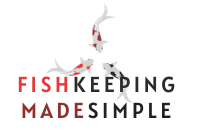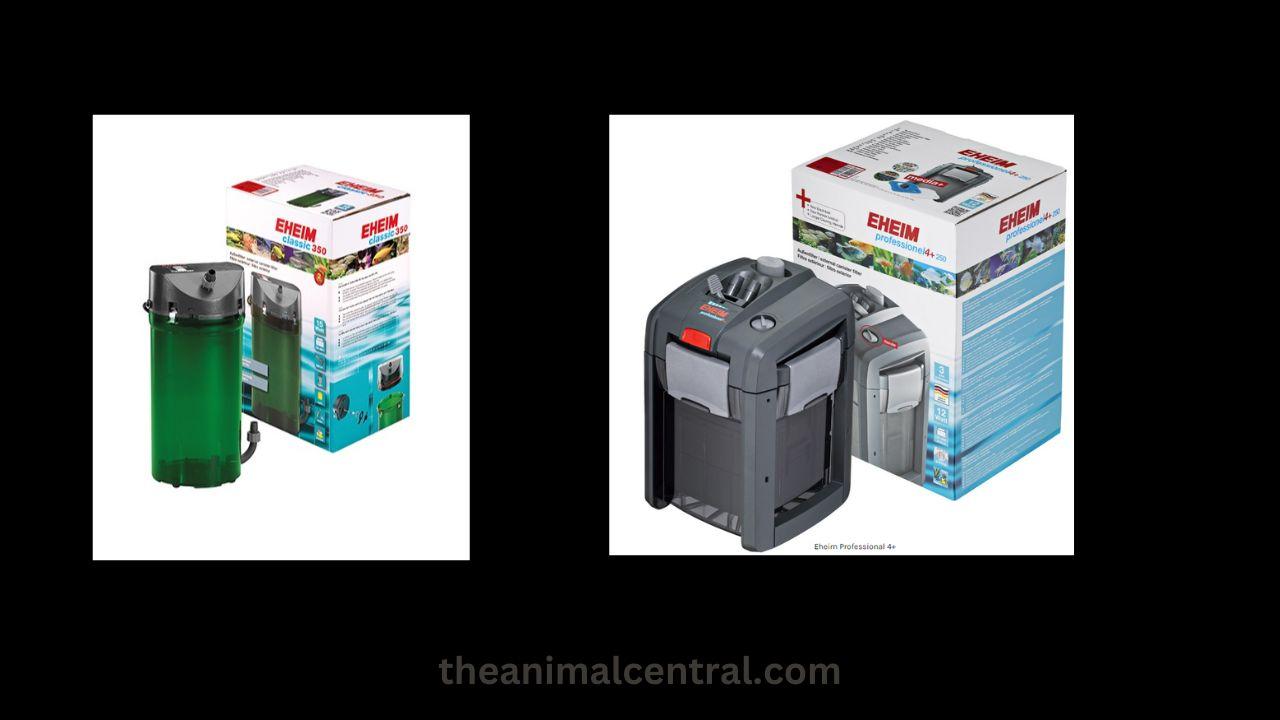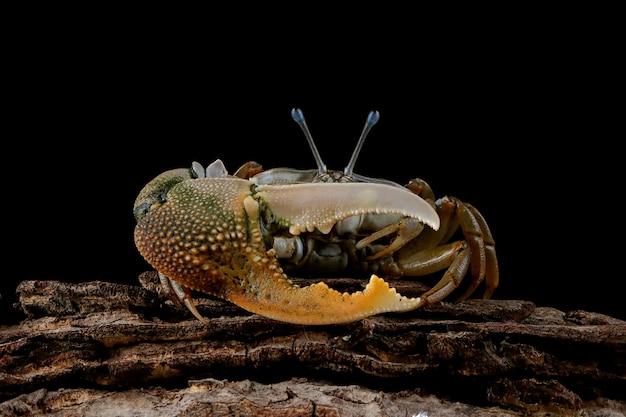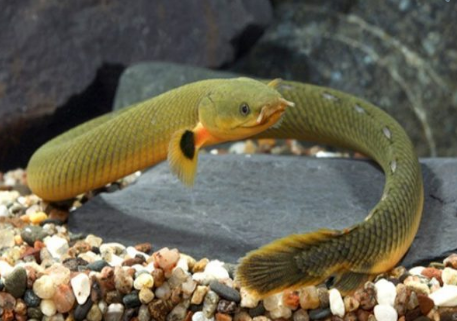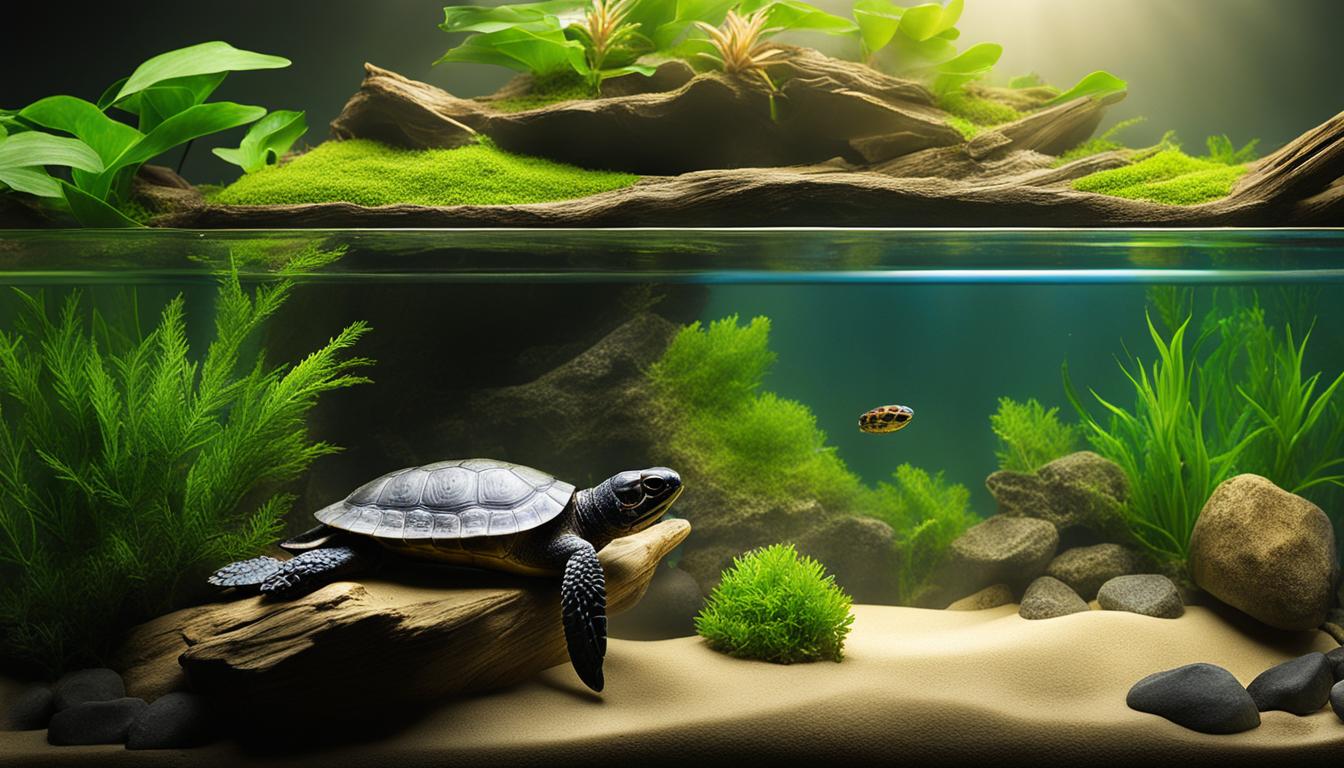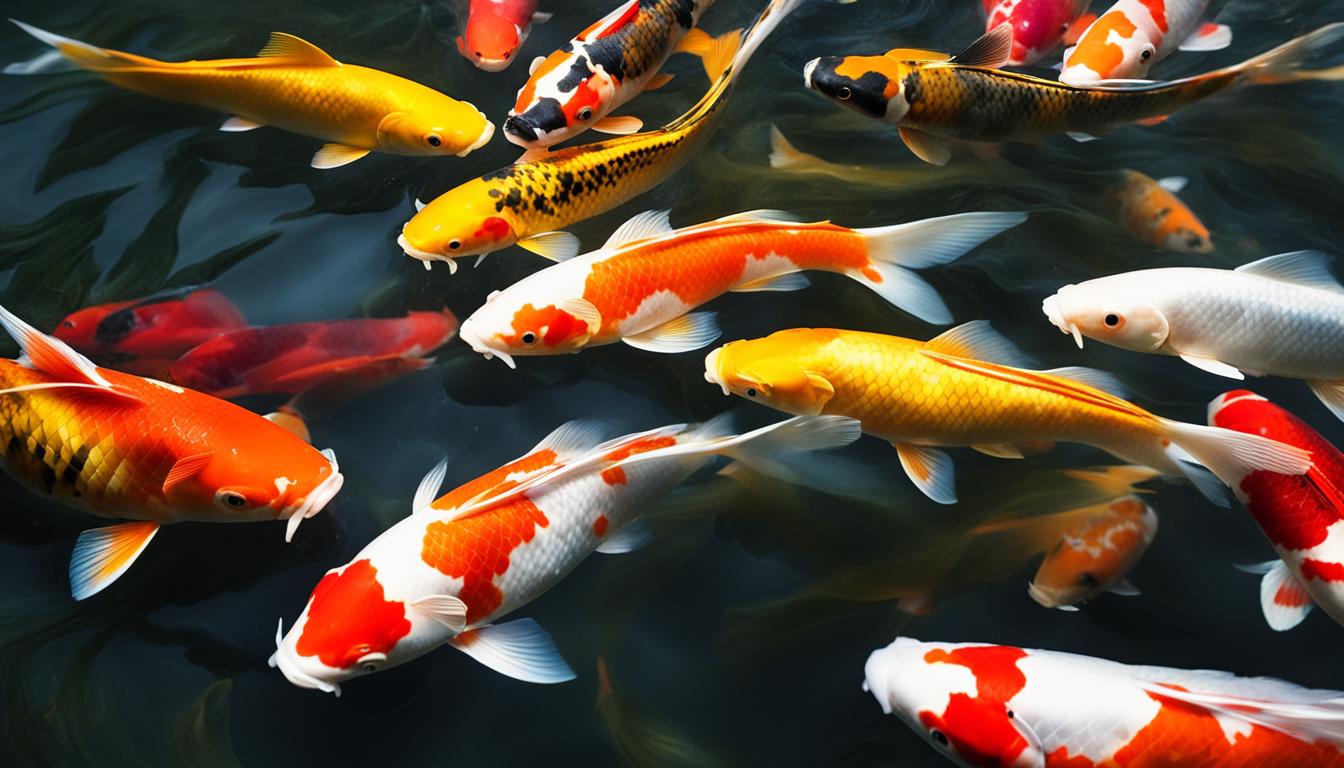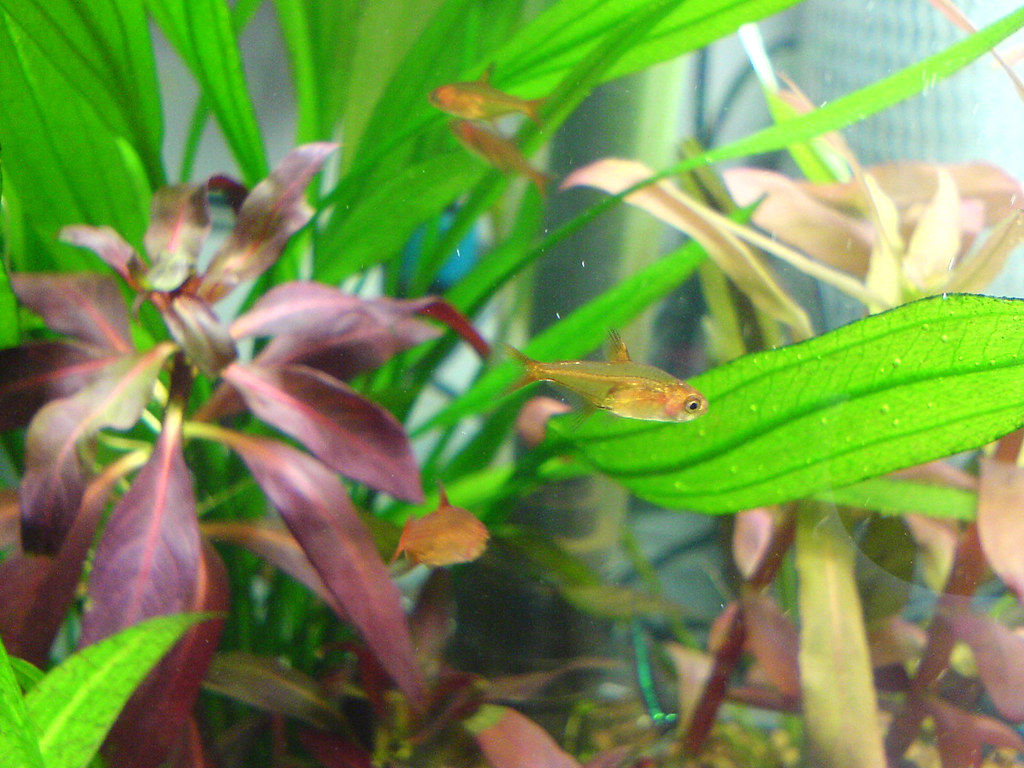Did you know Crystal Red shrimp started with a single mutation in the 1990s? This fact shows how these freshwater shrimp went from a small start to being loved by many around the world.
I’m excited to share the world of Crystal Red shrimp with you. These colorful creatures come from the Bee shrimp. They have bright red and white patterns that have won the hearts of many aquarium fans. This guide is for both new and experienced shrimp keepers, packed with key info about these amazing invertebrates.
We’ll cover their origins, care needs, and more. You’ll learn about their ideal tank, what they eat, how to breed them, and a special grading system. Let’s explore the world of these stunning freshwater shrimp together!
Table of Contents
Key Takeaways
- Crystal Red shrimp originated from a single mutation in Asia in the 1990s
- They require specific water parameters: pH 5.8-6.4, GH 3, KH 0, and TDS 80-100
- Optimal temperature range for Crystal Red shrimp is 68°F to 74°F
- A grading system from C to SSS exists, based on white coloration and opacity
- Regular maintenance and proper diet are key for their health and breeding success
Introduction to Crystal Red Shrimp
Crystal Red Shrimp, also known as Caridina cf. cantonensis ‘Crystal Red’, are a stunning addition to aquariums. Their bright colors and detailed patterns make them stand out.
Origin and History
The journey of Crystal Red Shrimp started in 1993. They are a special type of Bee shrimp (Caridina cantonensis). Breeders worked hard to change their colors from natural to the vibrant red and white we admire today.
Scientific Classification
Crystal Red Shrimp are part of the Caridina genus. Their full name is Caridina cf. cantonensis ‘Crystal Red’. This puts them in a group of freshwater shrimp that many people keep in aquariums.
Natural Habitat
In the wild, these shrimp live in small mountain streams in South-East Asia. Their home includes southern China, Hong Kong, Taiwan, and possibly northern Vietnam. These streams have soft, slightly acidic water with low minerals.
| Characteristic | Detail |
|---|---|
| Adult Size | 30 mm (1.2 inches) |
| Lifespan | 1 – 2 years |
| Optimal Temperature | 20°C – 25°C (68°F – 77°F) |
| Preferred pH | 5.4 – 6.2 |
Knowing where Crystal Red Shrimp come from helps us care for them better. Their needs reflect their natural habitats. This knowledge helps us create the perfect environment for these stunning shrimp.
Crystal Red Shrimp Appearance and Characteristics
Crystal Red Shrimp, known scientifically as Caridina cf. cantonensis ‘Crystal Red’, are stunning additions to aquariums. They have unique traits that make them popular for breeding.
Size and Physical Features
These small crustaceans show clear differences between males and females. Females can grow up to 1.5 inches, while males reach 1 inch. Their transparent bodies let you see their internal organs, making them even more fascinating.
Color Patterns
Their red and white colors are truly eye-catching. Through careful breeding, many color patterns and grades have been developed. The grading goes from C (lowest) to SSS (highest), based on how much white is visible and the red markings’ shape.
Lifespan Expectations
Crystal Red Shrimp can live for 1 to 2 years in a well-kept aquarium. Their lifespan depends on water quality, diet, and how much stress they face. Keeping their environment just right is key to their long life and successful breeding.
| Characteristic | Description |
|---|---|
| Scientific Name | Caridina cf. cantonensis ‘Crystal Red’ |
| Female Max Size | 1.5 inches |
| Male Max Size | 1 inch |
| Lifespan | 1-2 years |
| Grading System | C to SSS |
Tank Setup Requirements
Setting up the perfect tank for your aquarium shrimp is key. I’ll show you what you need to make sure your Crystal Red Shrimp are happy and healthy.
Minimum Tank Size
Size is important for Crystal Red Shrimp. Even experienced keepers might start with a 5-gallon tank. But, I suggest a 10-gallon tank for beginners. It gives better water stability and more space for your shrimp to play.
Essential Equipment
Here are the must-haves for your tank:
- Gentle filtration system (sponge filters work great)
- Heater to keep the temperature stable
- Water test kit to check the water
Substrate Selection
Picking the right substrate is critical. Use shrimp-specific substrates to keep the water perfect. These substrates help keep the pH stable, which is essential for your shrimp’s health.
| Tank Size | Recommended Substrate Depth | Substrate Type |
|---|---|---|
| 5-10 gallons | 1-2 inches | Fine-grained shrimp-specific |
| 20-30 gallons | 2-3 inches | Mixed fine and medium-grained |
| 30+ gallons | 3-4 inches | Layered with nutrient-rich base |
A well-thought-out tank setup is the base for a thriving shrimp colony.
Water Parameters and Maintenance
Crystal red shrimp need the right water conditions to stay healthy and colorful. I’ll show you how to keep their habitat perfect.
Temperature Range
Crystal red shrimp like cooler water. The best temperature is between 62°F and 74°F (16.5°C to 23°C). A cooler temperature helps them look their best.
pH and TDS Levels
The pH for crystal red shrimp should be slightly acidic to neutral. It should be between 5.8 and 7.4. Aim for 6.0 to 6.4 for the best conditions. TDS levels should be 80 to 100 ppm.
GH and KH Requirements
Crystal red shrimp need a General Hardness (GH) of 4-6. Their Carbonate Hardness (KH) should be very low, ideally 0-2.
| Parameter | Ideal Range |
|---|---|
| Temperature | 62°F – 74°F |
| pH | 5.8 – 7.4 |
| GH | 4 – 6 |
| KH | 0 – 2 |
| TDS | 80 – 100 ppm |
Regular care is essential. Do 10-20% water changes weekly to keep things stable. Use a good test kit to check your tank’s health often.
Optimal Tank Environment
Creating the perfect habitat for crystal red shrimp is key to their happiness. These delicate creatures do best in a setup that mirrors their natural home. I make sure to provide plenty of hiding spots and places for them to forage.
Live plants are essential in the tank. I use Java moss, Anubias, and Java fern to create a lush look. These plants offer shelter and are a food source for the shrimp. Driftwood and ceramic ornaments add more hiding spots, making the shrimp feel safe.
Crystal red shrimp have specific needs compared to other neocaridina species. Here’s a quick comparison of tank requirements:
| Parameter | Crystal Red Shrimp | Cherry Shrimp |
|---|---|---|
| Tank Size | 10-30 gallons | 5-20 gallons |
| Temperature | 68-77°F | 65-80°F |
| pH | 6.0-7.0 | 6.5-8.0 |
| GH | 4-6 | 4-8 |
| KH | 0-1 | 2-5 |
By keeping these parameters in check and creating a stress-free space, I encourage natural behaviors. This focus on crystal red shrimp care leads to a thriving colony of these beautiful creatures.
Crystal Red Shrimp Behavior
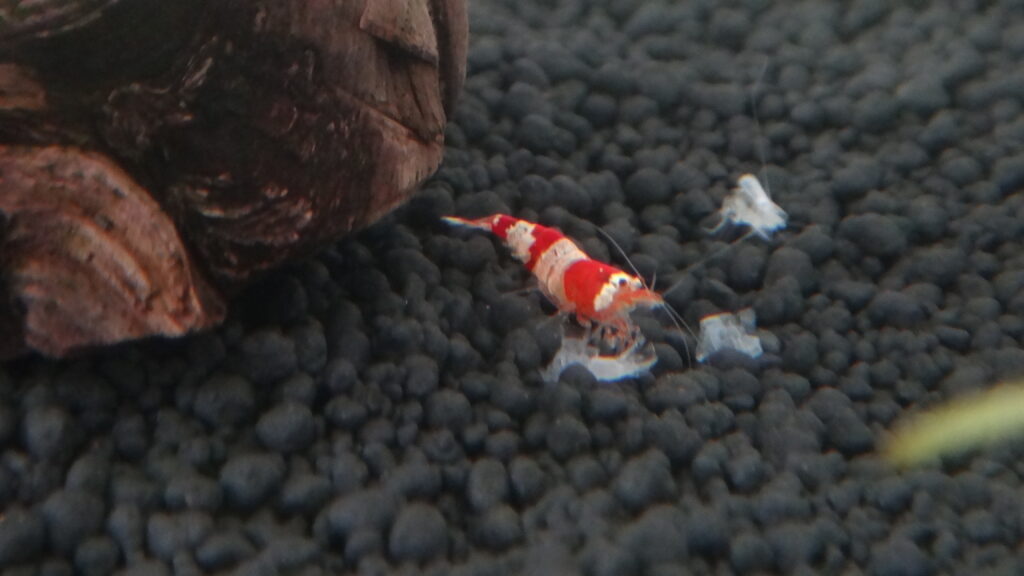
Crystal Red Shrimp are fascinating creatures with unique behaviors. I’ll explore their social interactions, activity patterns, and stress signals. This will help you understand and care for these delicate aquarium inhabitants.
Social Interactions
Crystal Red Shrimp are peaceful creatures that thrive in groups. Unlike some aggressive aquarium species, they coexist harmoniously with their own kind. Both crystal red shrimp and cherry shrimp share similar social tendencies, making them popular choices for community tanks.
Activity Patterns
These shrimp are most active in well-oxygenated water. They spend their time foraging for food, exploring their environment, and interacting with tank mates. Crystal red shrimp molting is a critical part of their growth cycle, occurring every 5 to 6 weeks. During this vulnerable period, they may hide more frequently.
Stress Signals
Recognizing stress in Crystal Red Shrimp is vital for maintaining their health. Signs of stress include:
- Lethargy or reduced activity
- Color changes or fading
- Erratic swimming patterns
- Refusal to eat
To minimize stress, maintain stable water parameters within their preferred range: pH 6.0-7.0, temperature 68°F-74°F (20°C-23°C), and GH 4-6. Regular water changes of 10-20% weekly help ensure optimal conditions for these sensitive creatures.
Feeding and Nutrition
Crystal red shrimp are easy to care for when it comes to food. In the wild, they spend a lot of time looking for food. I’ve learned that mimicking their natural diet in the aquarium is key to their health and color.
Their main food is algae and biofilm. To make sure they have enough, I always make sure the tank is well-established. This provides them with the natural food they need.
It’s also important to supplement their diet with high-quality food. I suggest giving them small amounts of shrimp pellets, algae wafers, or blanched veggies once or twice a day. But, don’t overfeed, as too much food can harm the water.
When picking out food for them, look for things rich in plants and proteins. These shrimp do well on a varied diet. A well-fed colony will be more active and colorful, making them great for your aquarium.
| Food Type | Frequency | Benefits |
|---|---|---|
| Algae wafers | 2-3 times per week | Promotes natural foraging behavior |
| Shrimp pellets | 1-2 times per week | Balanced nutrition |
| Blanched vegetables | Once a week | Provides variety and vitamins |
By following these feeding tips, your crystal red shrimp will stay healthy and active. Their simple diet needs make them perfect pets for aquarium lovers.
Breeding Crystal Red Shrimp
Breeding crystal red shrimp can be very rewarding. It’s important to create the right environment for success. These beautiful creatures need specific conditions to thrive.
Breeding Requirements
For successful breeding, keep the water stable. The ideal pH is around 6.6, and the temperature should be between 20°C – 25°C (68°F – 77°F). The GH should be between 5.5 – 7, and the KH should be 0 – 2. It’s also important to monitor ammonia levels closely.
Egg Development
Females carry 20-30 eggs for about 25-35 days before they hatch. Keep the environment stress-free during this time. Berried females often hide, so make sure there are plenty of plants and hiding spots.
Caring for Shrimplets
After hatching, shrimplets need special care. They eat biofilm and micro-algae naturally found in established tanks. I also give them crushed algae wafers, using less than 1/8 of a 1 cm wafer for 20-40 shrimp. Make sure to remove any excess food to keep the water quality good. With the right care, your crystal red shrimp population will grow.
| Breeding Factor | Recommended Value |
|---|---|
| Starting Group Size | Minimum 10, preferably 20+ |
| Male-to-Female Ratio | 1 male : 3 females |
| Tank Size | Minimum 30 L (8 US gallons) |
| Stocking Density | 2-4 adults per 1 L |
Grading System and Quality Assessment
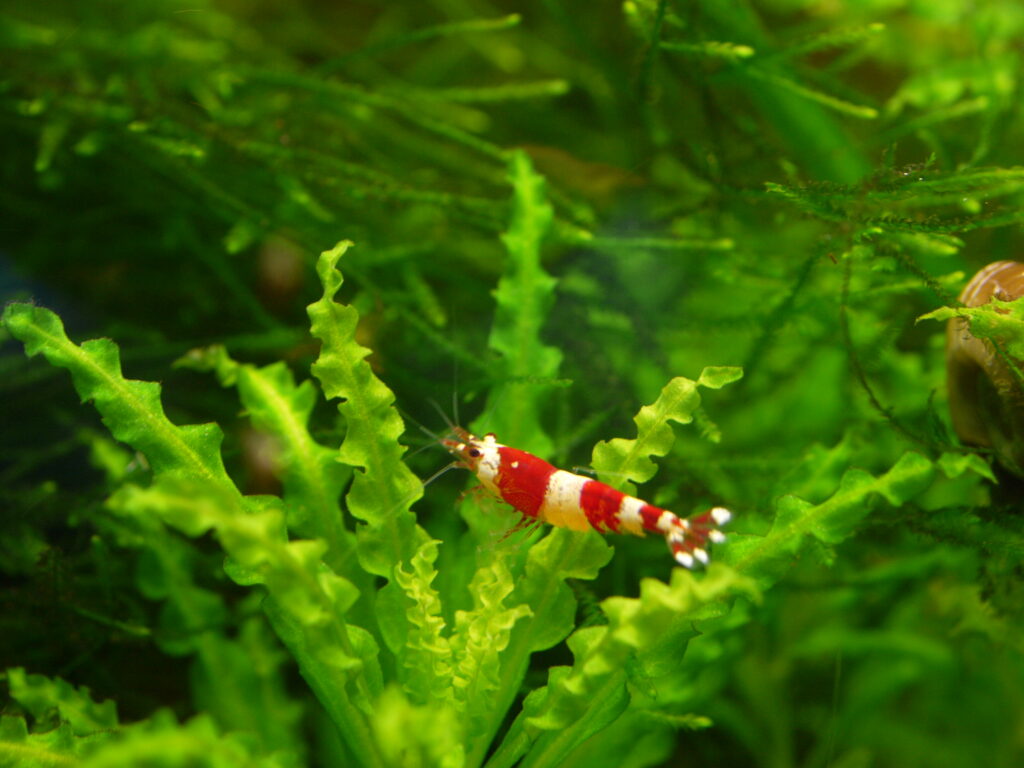
Crystal red shrimp fans use a detailed grading system to judge these colorful creatures. I’ll explain the main parts of this system. It’s key for both breeders and hobbyists.
Grade Classifications
The grading scale for crystal red shrimp goes from C-grade to SSS-grade. Higher grades have more white and opaque shells. This is a big difference from the original bee shrimp, showing the effects of selective breeding.
| Grade | White Coverage | Red Intensity |
|---|---|---|
| C | 20-40% | Light |
| B | 40-60% | Medium |
| A | 60-80% | Strong |
| S | 80-90% | Very Strong |
| SS | 90-95% | Intense |
| SSS | 95-100% | Vivid |
Color Intensity Factors
Several things affect the color of crystal red shrimp. Genetics are key, but diet and environment also matter. Good food with carotenoids can make red colors brighter. Clean water helps with health and color too.
Pattern Evaluation
When judging crystal red shrimp patterns, I look at white band width and clarity. The best ones have clear, bold patterns. This helps figure out the shrimp’s grade and value.
Knowing this grading system is vital for serious crystal red shrimp keepers or breeders. It helps pick quality shrimp and guides breeding to get better offspring.
Common Health Issues and Disease Prevention
Crystal red shrimp care means watching for health problems closely. These tiny creatures can get sick easily, often because of bad water. Keeping the water quality stable is key to stopping diseases in your shrimp tank.
Ammonia is a big danger for crystal red shrimp. Even a little bit can kill them. So, it’s important to test the water often. I suggest using a good test kit and changing 10-20% of the water each week to keep ammonia levels safe.
Bacterial infections are another big problem, affecting up to 30% of shrimp in bad conditions. Look out for signs like being very tired, losing color, and acting strangely. To avoid these issues, I keep the tank clean and the water hardness between 4 to 8 dGH.
Quarantining new shrimp is also very important. I’ve found that a 30-day quarantine can cut down disease risk by 90%. Along with a stable environment (pH 6.0-7.5, temperature 68-77°F), this is the best way to care for your crystal red shrimp.
Compatible Tank Mates
Choosing the right tank mates for Crystal Red Shrimp is key. They do best in tanks with just their kind. But, if you want a community tank, here are some tips.
Safe Companions
Crystal Red Shrimp and neocaridina species can live together. Cherry shrimp are a good choice because they’re the same size and need similar care. Other safe options include:
- Snails (nerite, mystery, bladder)
- Otocinclus catfish
- Dwarf corydoras
- Nano rasboras
Species to Avoid
Don’t pair Crystal Red Shrimp with bettas or guppies. These fish might see shrimp as food. Avoid these species:
- Larger crustaceans (crayfish, lobsters)
- Medium to large-sized fish (goldfish, cichlids)
- Carnivorous nano fish (dwarf gouramis, pea puffers)
Keep in mind, no tank mate mix is completely safe for shrimp. If you have a community tank, add lots of hiding spots. Use plants like java moss or water sprite to keep your Crystal Red Shrimp safe.
Molting Process and Care
Crystal red shrimp molting is a fascinating process that’s vital for their growth and survival. These tiny crustaceans shed their exoskeletons every 3-4 weeks on average. Young shrimp molt more often, sometimes every 1-2 weeks, because of their fast growth.
As they get older, the frequency of molting slows down to about once a month. The crystal red shrimp GH (General Hardness) level is key for successful molting. I’ve found that a GH between 5.5-7 is best.
This range ensures the shrimp get enough minerals, like calcium, to form a new, strong exoskeleton. During the pre-molt stage, shrimp absorb calcium and soften their old shell, getting ready for the molt.
Molting can be stressful for shrimp, making them vulnerable to osmotic shock right after. I always watch for signs of pre-molting, like reduced movement or increased preening. It’s best to keep disturbances low during this time.
If you see a white ring around a shrimp’s body, it’s called the “White Ring of Death.” It’s a sign of a molting issue. While survival chances are low, some shrimp do make it through with proper care and stable water conditions.
To support healthy crystal red shrimp molting, I ensure a balanced diet rich in calcium and protein. Algae wafers, blanched vegetables, and specialized shrimp foods are great options. Keeping water parameters stable, like a pH between 6.5-7.5 and a temperature range of 68-77°F, is key.
Regular water testing helps me catch any issues early. This promotes successful molts and thriving crystal red shrimp.
FAQ
What is the ideal tank size for Crystal Red Shrimp?
What are the optimal water parameters for Crystal Red Shrimp?
How often should I feed my Crystal Red Shrimp?
Can Crystal Red Shrimp be kept with fish?
How can I tell if my Crystal Red Shrimp are breeding?
What should I do if my Crystal Red Shrimp are losing color?
How often do Crystal Red Shrimp molt?
Can Crystal Red Shrimp be kept with other shrimp species?
What’s the lifespan of Crystal Red Shrimp?
How can I improve the color intensity of my Crystal Red Shrimp?
Reference
| International Body | Website |
| American Aquarium Association | https://www.americanaquariumproducts.com/ |
| International Aquatic Plants Society | https://www.iapso-online.com/ |
| International Shrimp Competitions | https://www.shrimpspot.com/ |
| Shrimp and Freshwater Invertebrates | https://www.shrimpspot.com/forums/freshwater-invertebrates.37/ |
I am a passionate aquarist with over 30 years of hands-on experience in fishkeeping. My journey began at a young age, collecting fish from the wild and learning through experimentation. Specializing in tropical fish, I bring a deep understanding of the hobby to FishKeepingMadeSimple. The site provides honest, detailed reviews of essential products and accessories to help fellow enthusiasts create the best environments for their fish.
